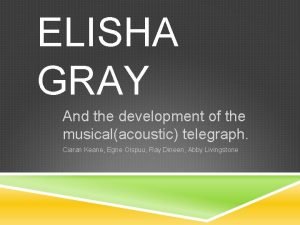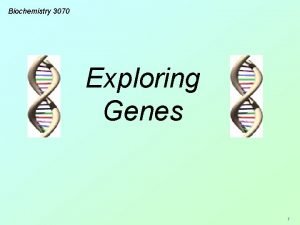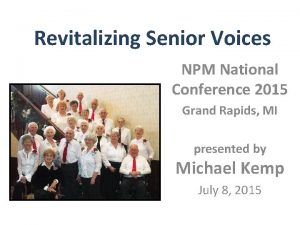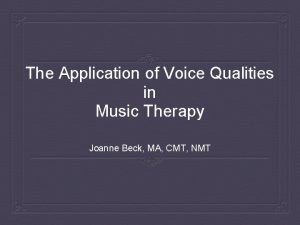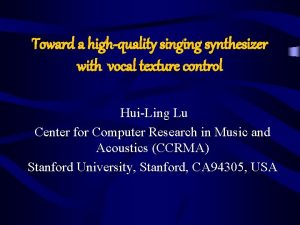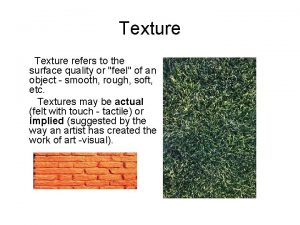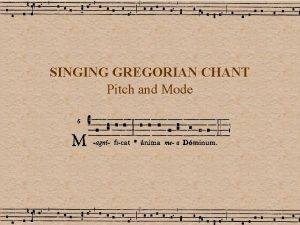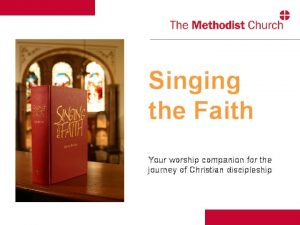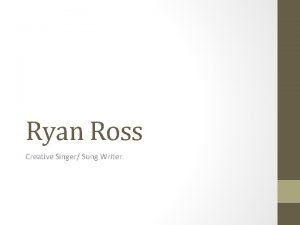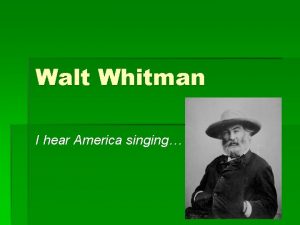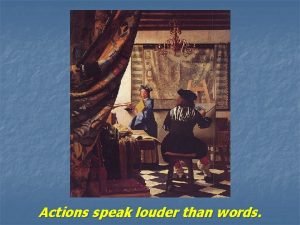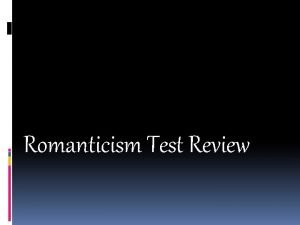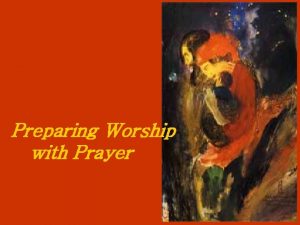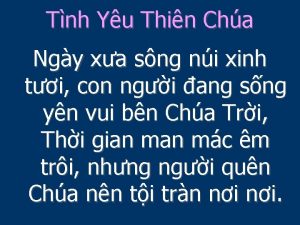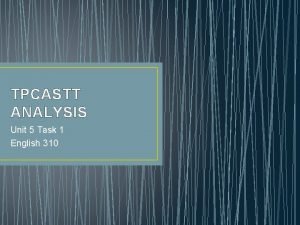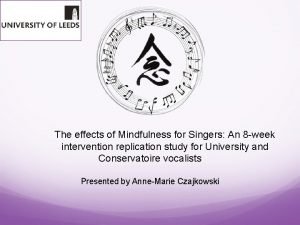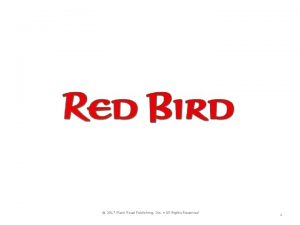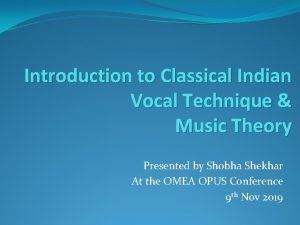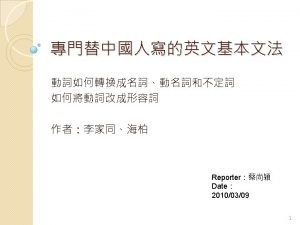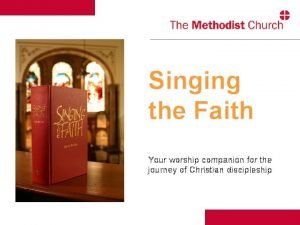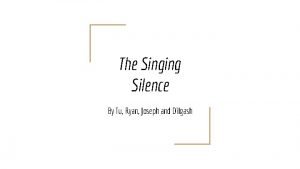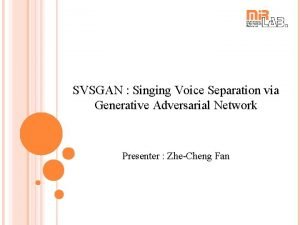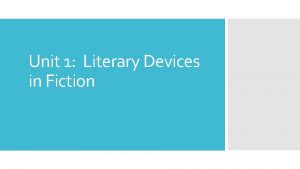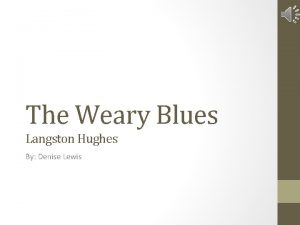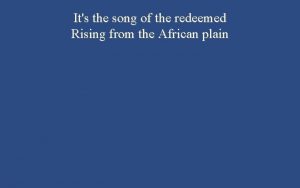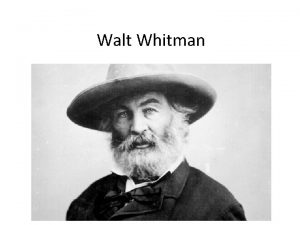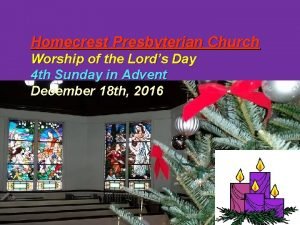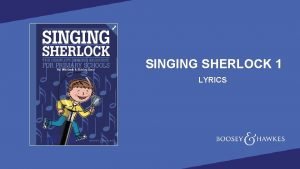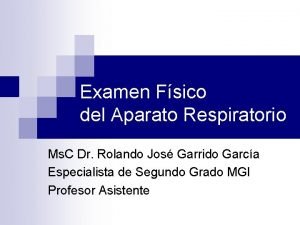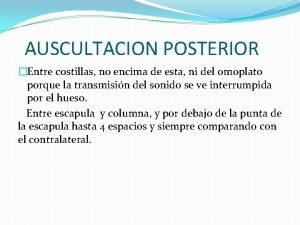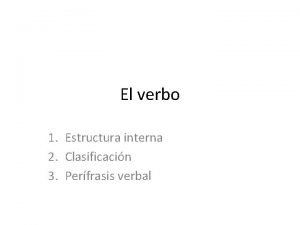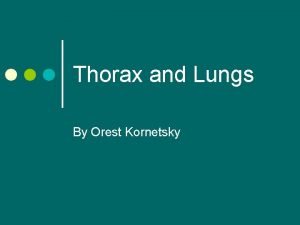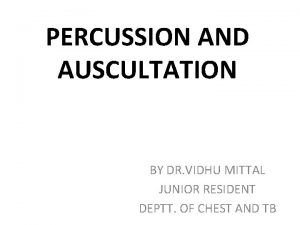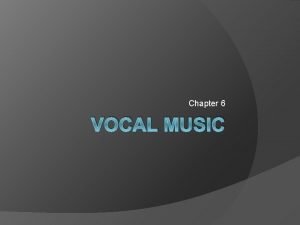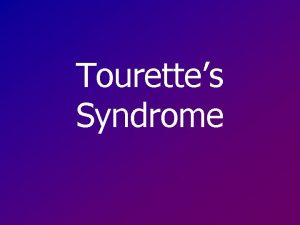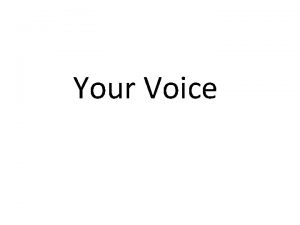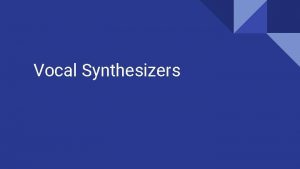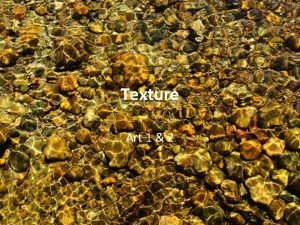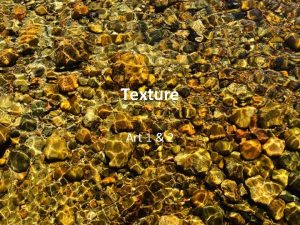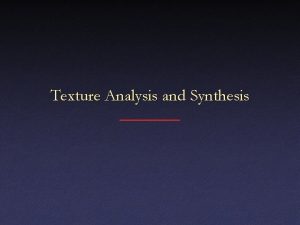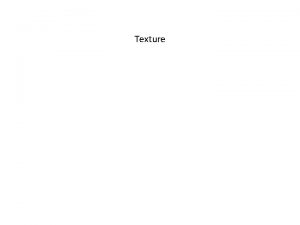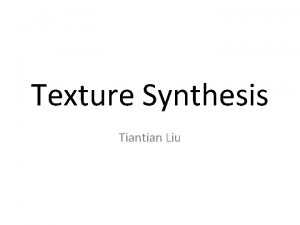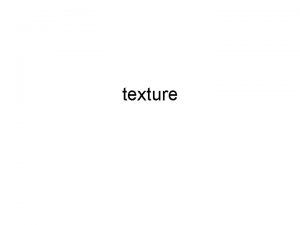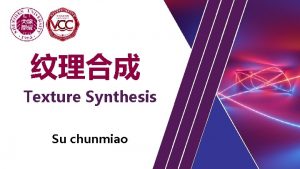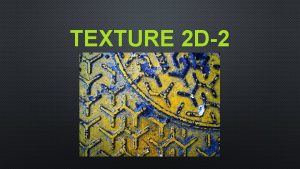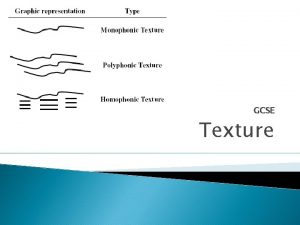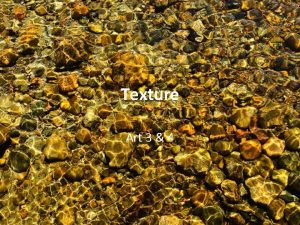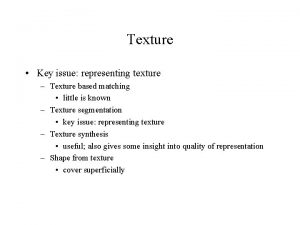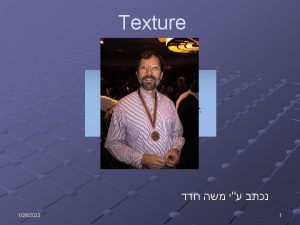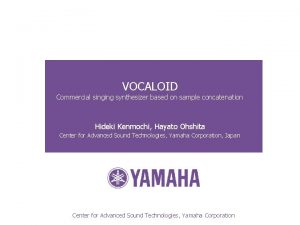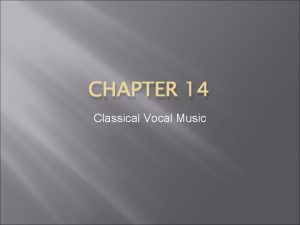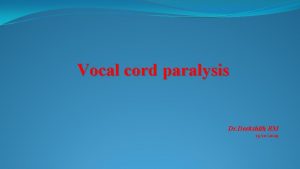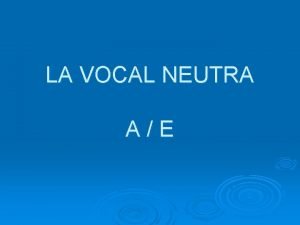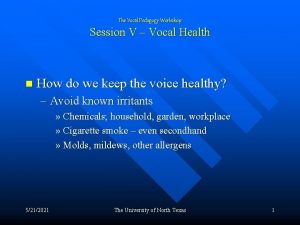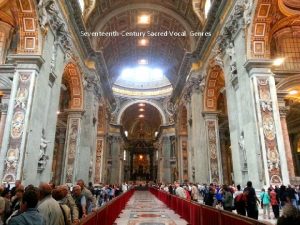Toward a highquality singing synthesizer with vocal texture













































- Slides: 45

Toward a high-quality singing synthesizer with vocal texture control Hui-Ling Lu Center for Computer Research in Music and Acoustics (CCRMA) Stanford University, Stanford, CA 94305, USA

Score-to-Singing system Phoneme Score Lyrics Singing style Rule system F 0 Sound level Duration Vibrato • Lyrics-to-phoneme • Musical rules Parametric Database Sound synthesis Singing voice • Acoustic rendering • Co-articulation rules

General sound synthesis approaches Cons • analysis/re-synthesis difficult • invasive measurements Pros Physical Modelin g • flexible/intuitive control • expressive • co-articulation easy Sourcefilter Model • less expressive • co-articulation difficult Spectral Modelin g • analysis/re-synthesis easy

Contributions A pseudo-physical model for singing voice synthesis which • is an approximate physical model. • can generate high-quality non-nasal singing voice. • has analysis/re-synthesis ability. • is computationally affordable. • provides flexible control of vocal textures. An Automatic analysis procedure for analysis/re-synthesis A parametric model for vocal texture control

Outline • Human voice production system • Synthesis model • Analysis procedure • Vocal texture parametric model • Vocal texture control demo • Contributions and future directions

The human voice production system Nasal cavity Nasal sound output Oral cavity Oral sound output Velum Pharyngeal cavity Vocal folds Lungs Muscle force Tongue hump

Oscillation pattern of the vocal folds Opening period Open phase Closing period Close phase • The oscillation results from the balancing of the subglottal pressure, the Bernoulli pressure and the elastic restoring force of the vocal folds. • Prephonatory position : the initial configuration of the vocal folds before the beginning of oscillation.


Variation of vocal textures Pressed Normal Breathy

Simplified human voice production model • Source-tract interaction: The glottal waveform in general depends on the vocal tract configuration. • Neglect the source-tract interaction since the glottal impedance is very high most of the time. Glottal Source Vocal Tract Filter Aspiration noise Radiation

Source-filter type synthesis model Glottal Source Radiation Vocal Tract Filter Aspiration noise Glottal excitation Derivative Glottal Wave Aspiration noise Filter Vocal Tract Filter Voice output

Overview of the proposed synthesis model Glottal excitation Derivative glottal wave Filter Transformed Liljencrants-Fant Model All Pole Filter Noise Residual Model High-passed aspiration noise Voice output

Transformed Liljencrants-Fant (LF) model amplitude • The transformed LF model controls the wave shape of the derivative glottal wave via a single parameter, Rd ( wave-shape control parameter). 0. 05 pressed phonation 0 amplitude -0. 05 0 200 400 600 800 1000 1200 1400 0. 05 normal phonation 0 -0. 05 amplitude derivative glottal wave from LF model 0 200 400 600 800 1000 1200 1400 0. 05 breathy phonation 0 -0. 05 0 200 400 600 800 time index 1000 1200 1400

Transformed Liljencrants-Fant (LF) model • Transformed LF model is an extension of the LF model. It provides a control interface for the LF model to change the wave shape of the derivative glottal wave easily. Synthesis: Wave shape Rd control parameter Mapping Analysis: Estimated derivative glottal wave LF fitting Direct synthesis timing parameters Derivative glottal wave LF model Mapping-1 Rd

Liljencrants-Fant (LF) model

Transformed Liljencrants-Fant (LF) model • Transformed LF model is an extension of the LF model. It provides a control interface for the LF model to change the wave shape of the derivative glottal wave easily. Synthesis: Wave shape Rd control parameter Analysis: Estimated derivative glottal wave Mapping LF fitting Direct synthesis timing parameters Derivative glottal wave LF model Mapping-1 Rd

Noise residual model Bn Gaussian Noise Generator Noise floor Noise residual Amplitude Modulation An GCI + L

Vocal tract filter • An all-pole filter. • The vocal tract is assumed to be a series of concatenated uniform lossless cylindrical acoustic tubes. • Assume that sound waves obey planar propagation along the axis of the vocal tract. A 1 glottis A 2 AN Alip end Ug 1 -k. N -1 Ulip

Vocal tract filter Kelly-Lochbaum junction : Scattering coefficient 1 -km Um+ Am Um- -km + Um+1 km 1+km Am+1 Um+1 : the propagation time for sound wave to travel one acoustic tube. N : the number of acoustic tubes excluding the glottis and the lip end. • If sampling period T = 2 , the transfer function of the vocal tract acoustic tubes can be shown to be an Nth order all-pole filter. • The autoregressive coefficients of the vocal tract filter can be converted to scattering coefficients by Durbin’s method.

Overall synthesis model implementation Degree of breathiness 0. 8 E e , F 0 Vocal texture model Rd Transformed LF model + Glottal excitation strength Ee Fundamental frequency F 0 Noise residual model Output voice (No noise input)

Analysis procedure Desired voice recording Source-filter de-convolution Inverse filtered glottal excitation De-noising by Wavelet Packet Analysis Fitting the estimated derivative glottal wave via LF model coefficients High-passed aspiration noise

Source-filter de-convolution • Synthesis model for analysis KLGLOTT 88 (KL) derivative glottal wave Basic Voicing Waveform (a, b, OQ) Low-pass filter Nth order All pole vocal tract filter N+1 order all pole filter


Source-filter de-convolution • Synthesis model for analysis KLGLOTT 88 (KL) derivative glottal wave Basic Voicing Waveform (a, b, OQ) Low-pass filter Nth order All pole vocal tract filter N+1 order all pole filter

Source-filter deconvolution estimation flowchart Voice signal after removing the low frequency drift GCI detection Phase I One glottal period signal Loop over different OQ values: Vocal tract filter and glottal source estimation via SUMT End Select and store 5 best estimates Phase II Loop for each period: Enforce continuity constraints via Dynamic Programming End Smoothing the vocal tract area by time averaging and linear interpolation Estimated model parameter sequence

Convex optimization formulation Basic Voicing Waveform (a, b, OQ) N+1 order all pole filter Inverse filter • Estimate by minimizing the error between the basic voicing waveform and the estimated one.

Convex optimization formulation • Error for one glottal cycle in vector form, A convex optimization problem Minimize Subject to • L 2 norm is used The above problem can be solved by SUMT (sequential unconstrained minimization technique).

De-convolution result (synthetic data)

Effective analysis/re-synthesis Baritone examples: • Normal phonation original KLGLOTT 88 • Pressed phonation original KLGLOTT 88 (KL) derivative glottal wave Basic Voicing Waveform (a, b, OQ) Low-pass filter Nth order All pole vocal tract filter

Analysis procedure Desired voice recording Source-filter de-convolution Inverse filtered glottal excitation De-noising by Wavelet Packet Analysis Fitting the estimated derivative glottal wave via LF model coefficients High-passed aspiration noise

De-noising by Wavelet Packet Analysis De-noising by best basis thresholding : • A noisy data record: X = f + W • Transform the noisy data to another basis via Wavelet Packet Analysis : XB = f. B + WB • Thresholding out the smaller coefficients of XB by assuming that f can be compactly represented in the new basis by a few large coefficients. • Select the wavelet filter by energy compactness criteria: 1/(number of coefficients needed to accumulate 0. 9 of the total energy).

De-noising result (synthetic data)

Analysis procedure Desired voice recording Source-filter de-convolution Inverse filtered glottal excitation De-noising by Wavelet Packet Analysis Fitting the estimated derivative glottal wave via LF model coefficients High-passed aspiration noise

Effective analysis/re-synthesis Baritone examples: • Normal phonation original LF • Pressed phonation original LF

Vocal texture control • The parametric vocal texture control model determines the parameterizations of the glottal excitation to achieve the desired vocal texture. • Reduce the control complexity by exploring the correlations between the model parameters. Wave shape Desired Non-breathy mode control Transformed vocal parameter LF ? texture Rd model Glottal excitation strength Ee breathy mode ? Rd Noise residual model

Vocal texture control (non-breathy mode) Pressed and normal modes Wave-shape control parameter Rd and normalized glottal excitation strength Ee are highly correlated.



Vocal texture control (non-breathy mode) Degree of pressness Glottal excitation strength Ee interpolation (apress bpress cpress) (anormal bnormal cnormal) (a, b, c) Wave shape control parameter Rd Glottal Transformed excitation LF model

Vocal texture control (breathy mode) High-passed noise energy • NHR per glottal cycle Glottal excitation strength Ee • NHR is an indicator for the degree of breathiness. • The contour of the noise strength is adjusted by NHR. Desired vocal texture Ee NHR Bn=1 An = 2. 4138* Bn + 0. 213 duty cycle window lag Rd Transformed + LF model Noise residual model gain Glottal excitation

Overall synthesis model implementation Degree of breathiness 0. 8 E e , F 0 Vocal texture model Rd Glottal excitation strength Ee Fundamental frequency F 0 Transformed LF model Noise residual model Glottal + excitation Output voice

Vocal texture control demo

Contributions A pseudo-physical model for singing voice synthesis which • is an approximate physical model. • can generate high-quality non-nasal singing voice. • has analysis/re-synthesis ability. • is computationally affordable. • provides flexible control of vocal textures. An Automatic analysis procedure for analysis/re-synthesis A parametric model for vocal texture control

Future research • Build a complete score-to-singing system using the proposed synthesis model. Its associated analysis procedure will be used to construct the parametric database. • Investigate potential usage of the source-filter deconvolution algorithm to low-bit rate high quality speech coding. • Explore the application of the analysis procedure on sound transformation of vocal textures.

Thank you !
 Elisha gray biography
Elisha gray biography Recombinant dna
Recombinant dna Vocal chord singingflat singing
Vocal chord singingflat singing Toft instrument classification
Toft instrument classification True vocal folds and false vocal folds
True vocal folds and false vocal folds Pressness
Pressness Simulated texture example
Simulated texture example Gregorian chant modes
Gregorian chant modes Singing the faith plus
Singing the faith plus Ryan ross singing
Ryan ross singing Holy holy are you god
Holy holy are you god Whitman i hear america singing
Whitman i hear america singing Ruby green singing painting
Ruby green singing painting Singing progression
Singing progression I hear america singing romanticism
I hear america singing romanticism Singing praise
Singing praise Ngày xưa sông núi xinh tươi
Ngày xưa sông núi xinh tươi Tp castt poetry analysis answers
Tp castt poetry analysis answers Kite play drawing
Kite play drawing Singing teacher
Singing teacher Red bird singing from the old pine tree
Red bird singing from the old pine tree What is the vocal technique used by the indian
What is the vocal technique used by the indian Before i spoke a word
Before i spoke a word I like singing
I like singing Singing the faith plus
Singing the faith plus The singing silence literary devices
The singing silence literary devices Glory glory hallelujah he reigns
Glory glory hallelujah he reigns Singing
Singing Which line in the following excerpt from joseph
Which line in the following excerpt from joseph What is the theme of the weary blues
What is the theme of the weary blues To wait seemed foolish when decisive action was required
To wait seemed foolish when decisive action was required The song of the redeemed
The song of the redeemed I'm singing for my lord everywhere i go lyrics
I'm singing for my lord everywhere i go lyrics Walt whitman literary movement
Walt whitman literary movement Angels singing to shepherds
Angels singing to shepherds Holly the hedgehog lyrics
Holly the hedgehog lyrics Boy singing
Boy singing Vibraciones vocales abolidas
Vibraciones vocales abolidas Fremito dental
Fremito dental Aceporran significado
Aceporran significado Percuss lungs
Percuss lungs Plexor and pleximeter finger
Plexor and pleximeter finger Costal angle
Costal angle 6 kinds of vocal music
6 kinds of vocal music Vocal tic examples
Vocal tic examples Where is your voice box
Where is your voice box
